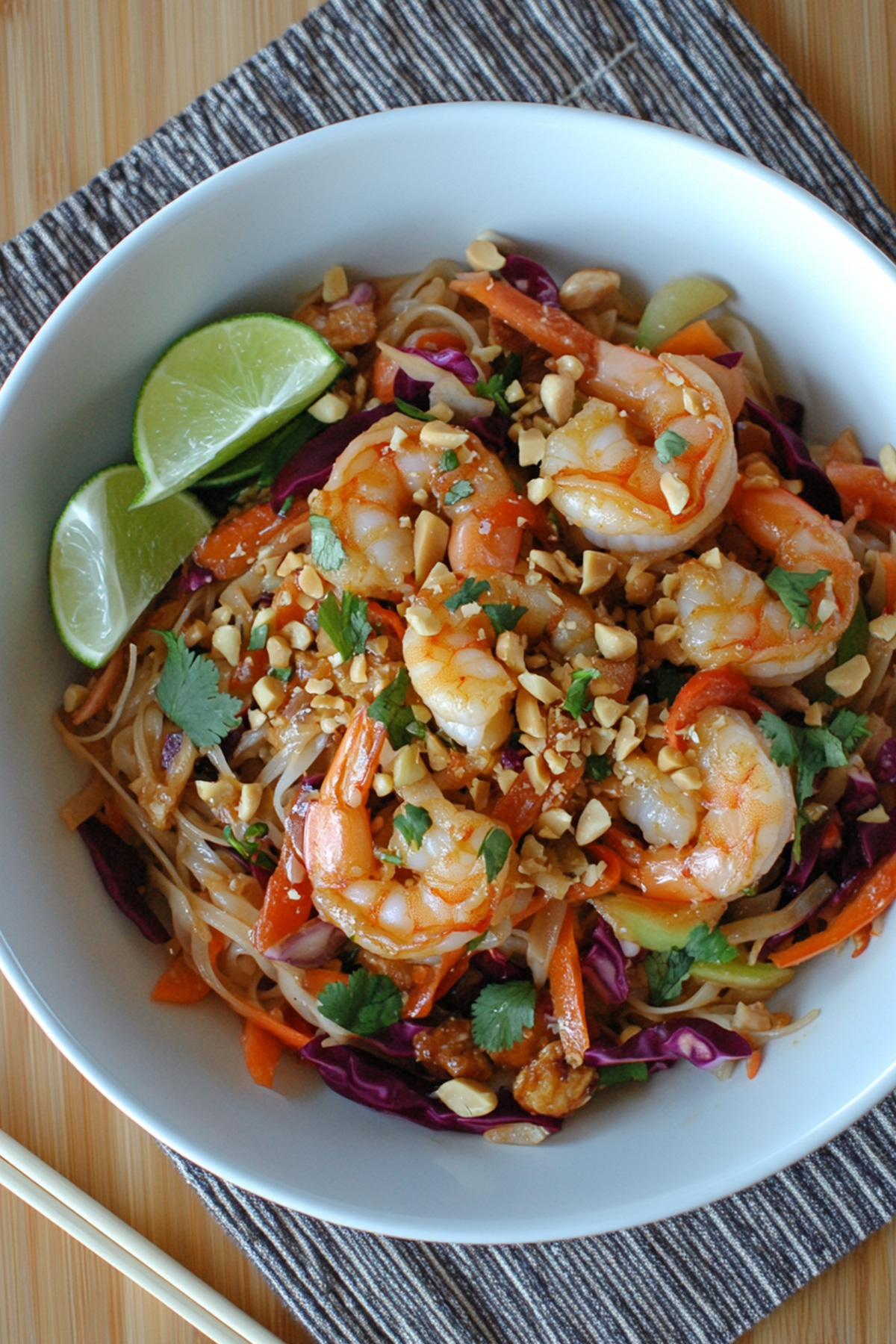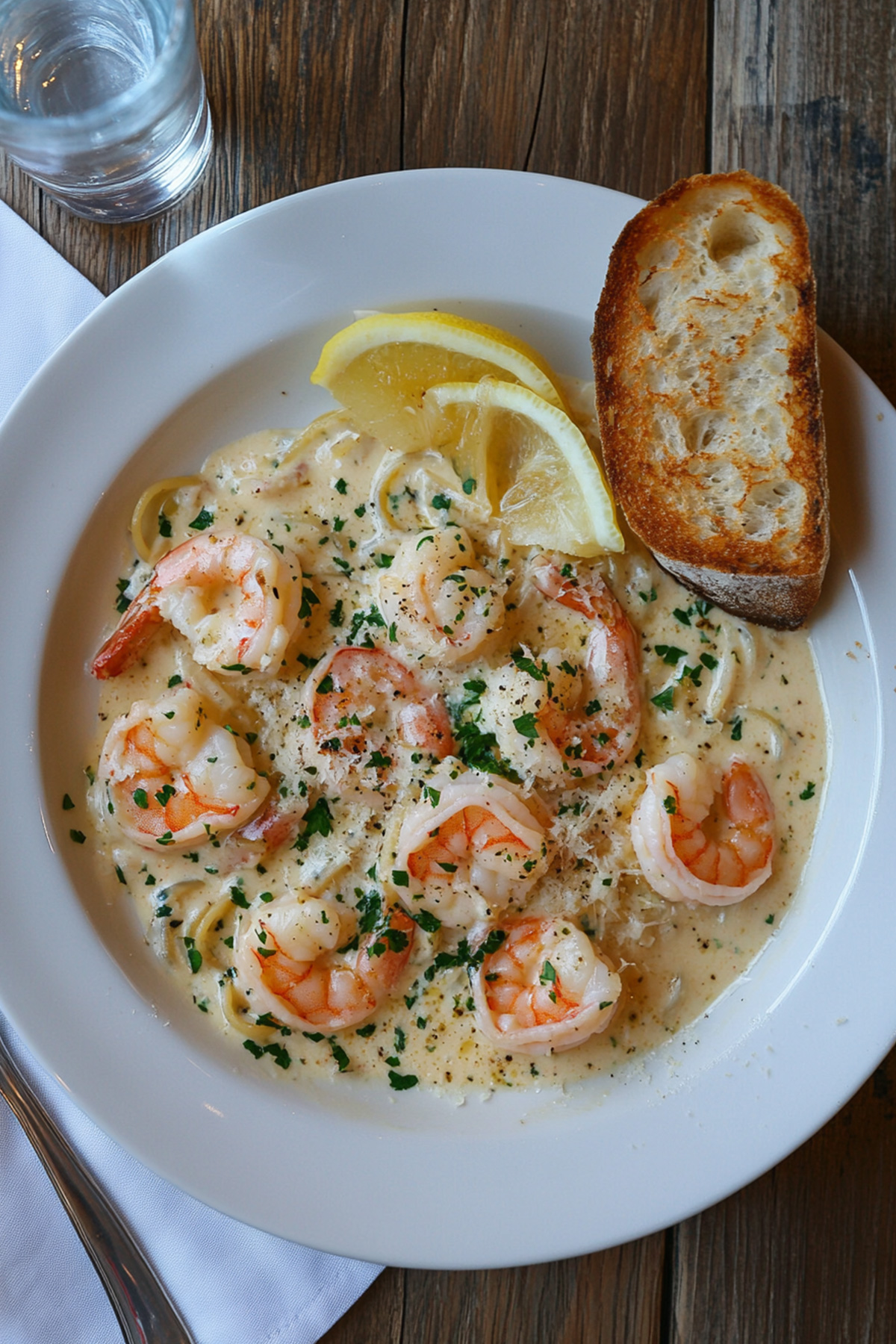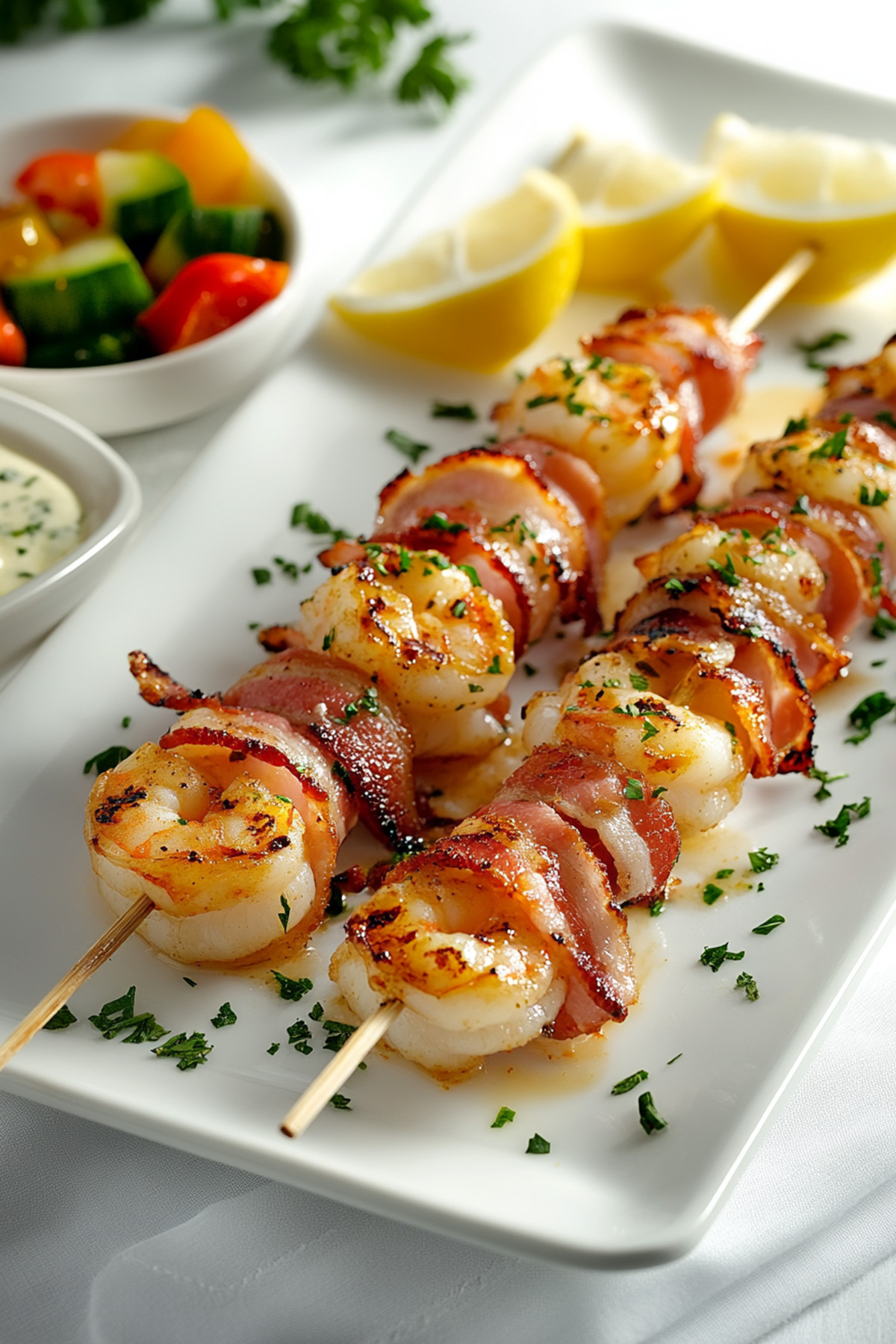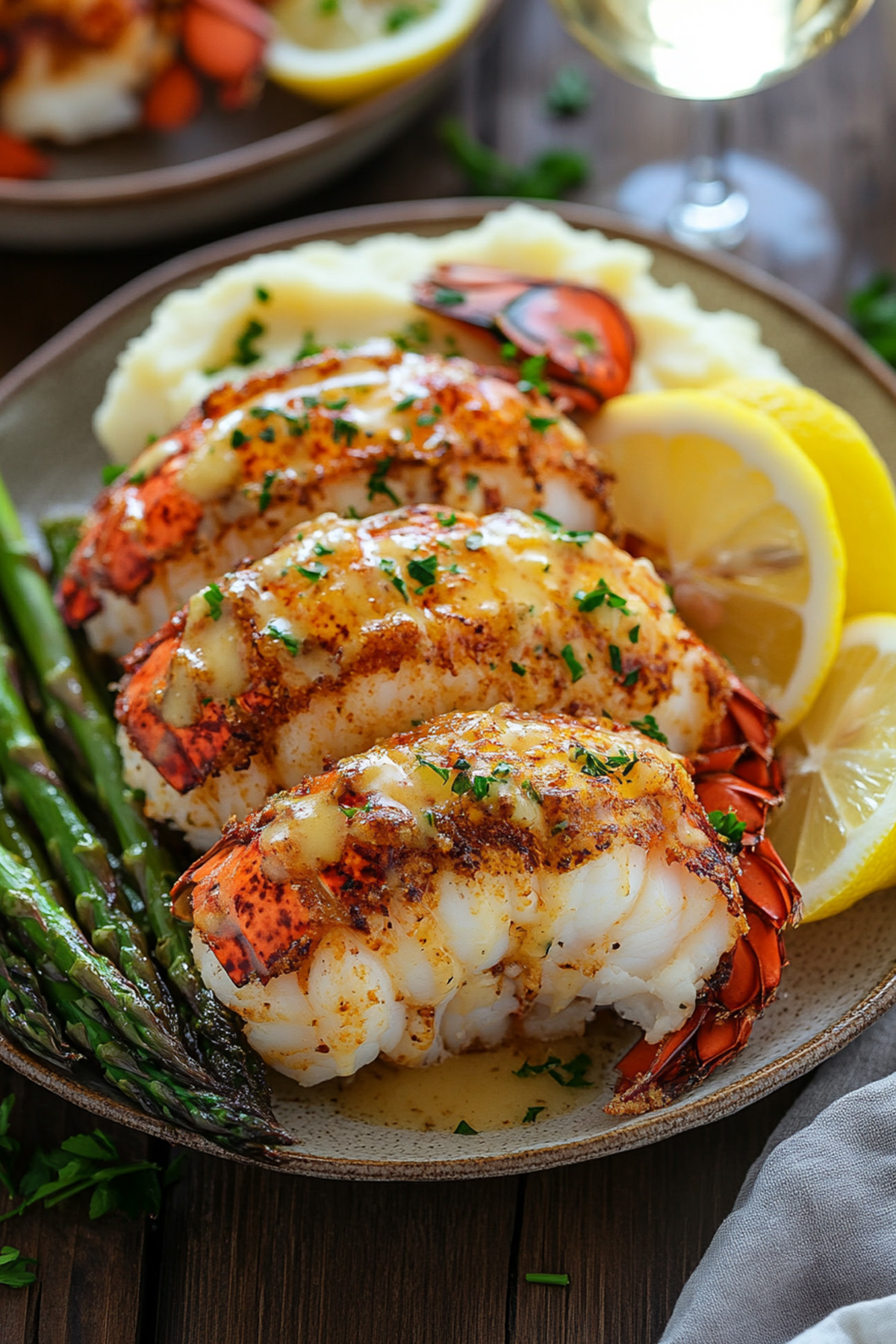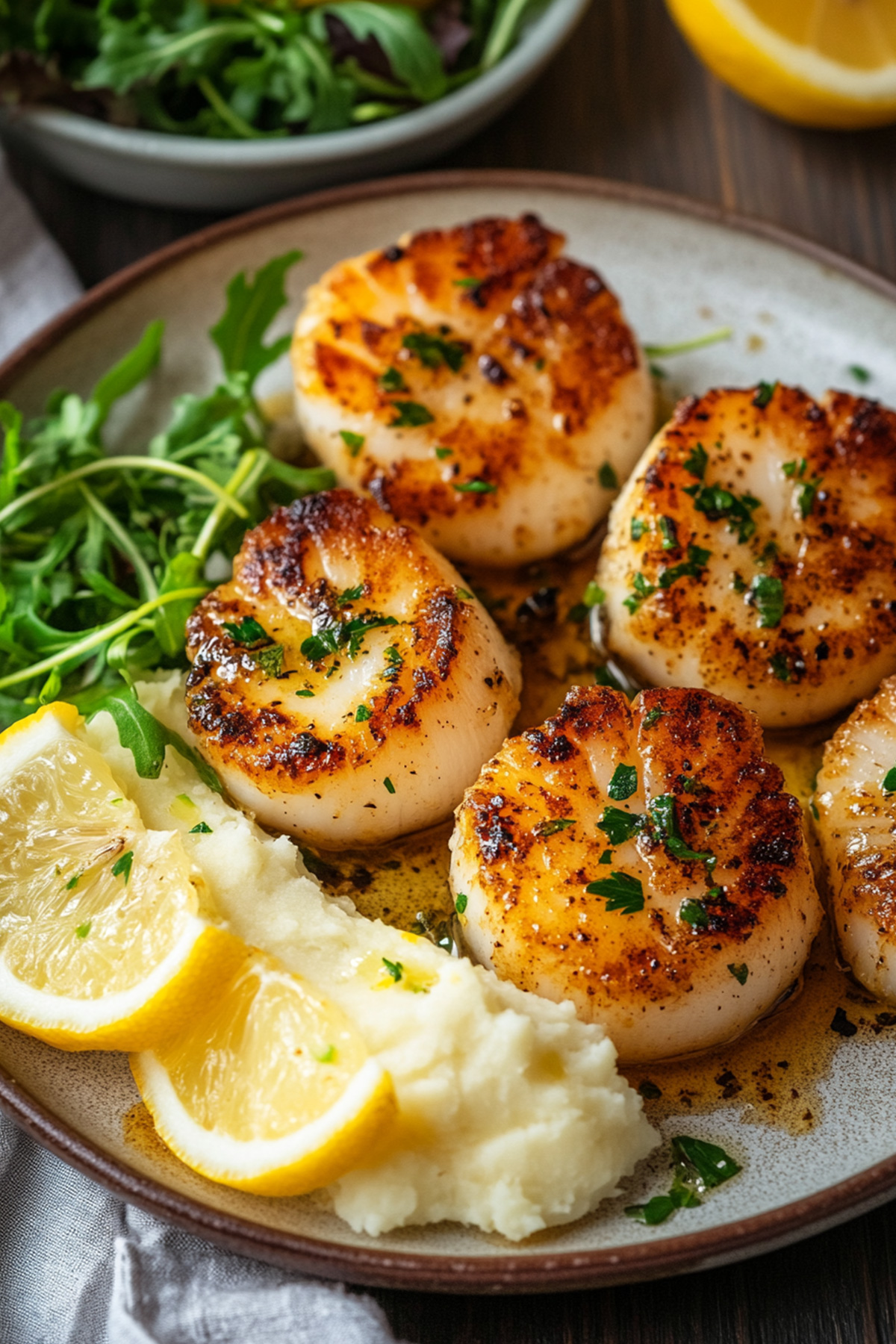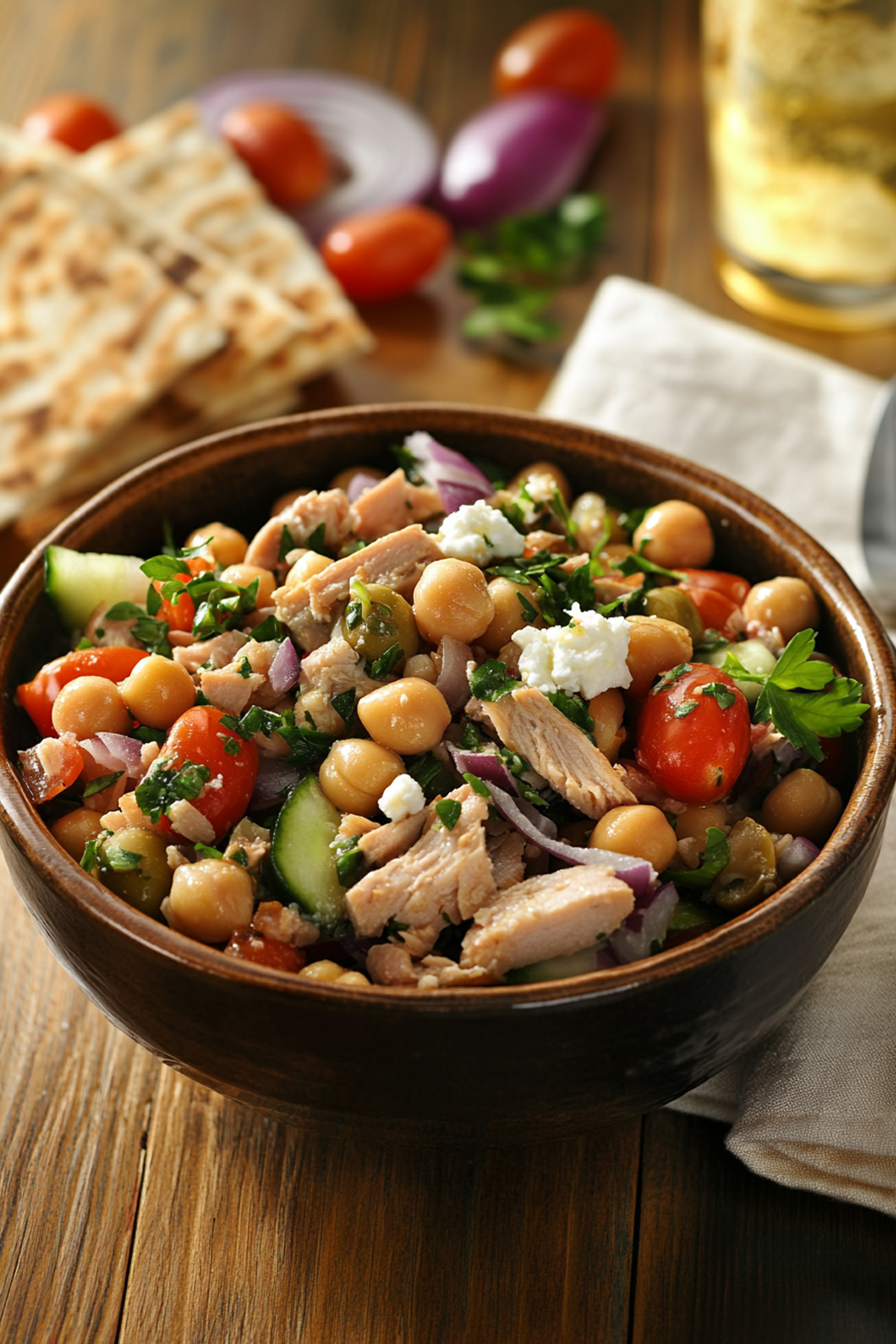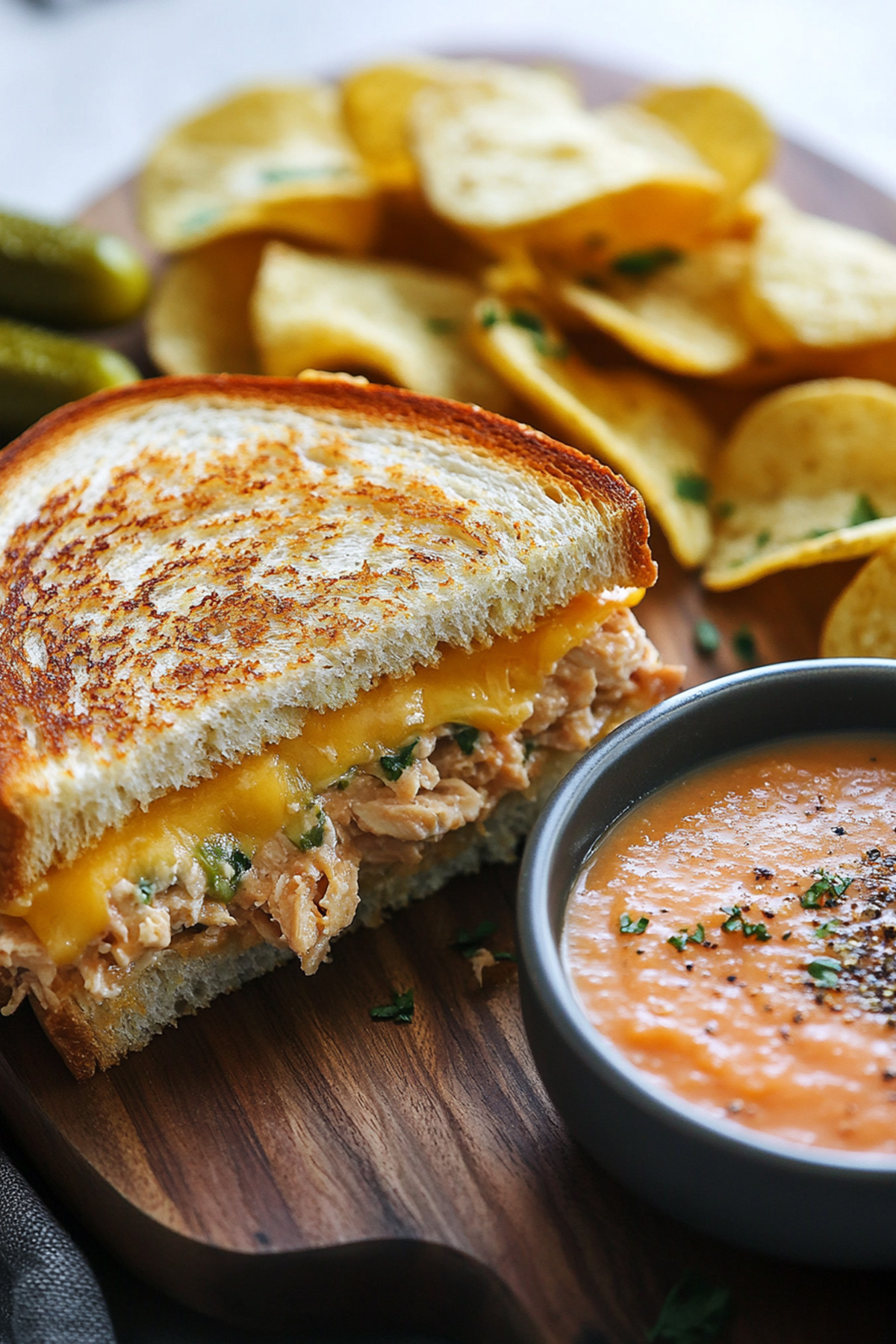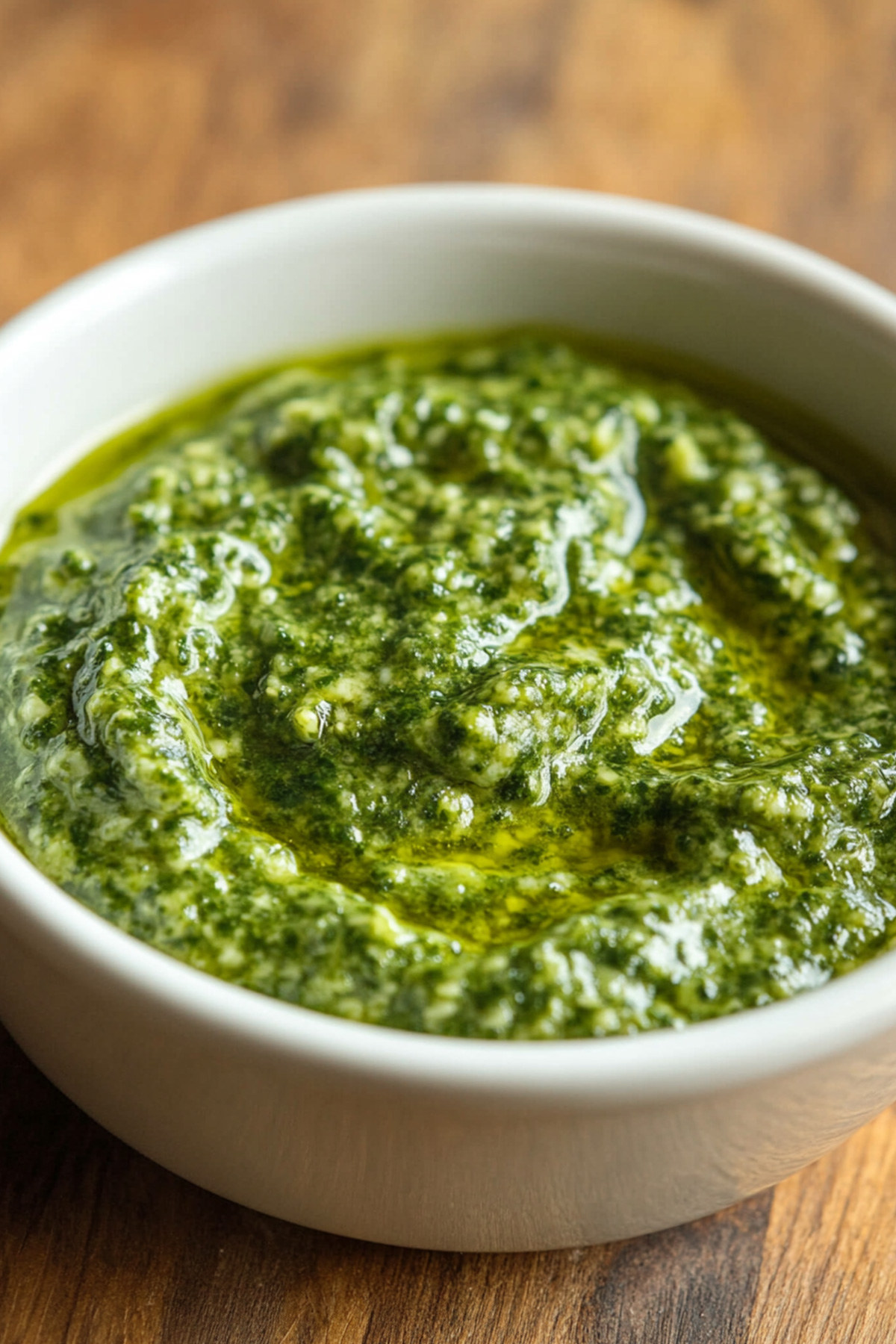Disclosure: As an Amazon Associate and participant in other affiliate programs, we earn from qualifying purchases. We only recommend products we believe will provide value to our readers.
Have you seen that perfect golden-brown almond crust on fish at restaurants? The magic happens when you become skilled at making almondine fish, a classic French dish that’s both elegant and simple to make right in your kitchen.
You don’t need professional chef skills or fancy equipment to create your own fish almondine. Quality ingredients and the right technique will help you bake a restaurant-worthy dish at home. This piece shows you everything about preparing this timeless recipe, from picking the best fish to getting that perfect almond crust.
You’ll discover the step-by-step process of making baked almondine fish and learn what mistakes to avoid. The helpful tips ensure your dish turns out great every time. This recipe will become your favorite way to cook fish, whether it’s a special occasion or you want to lift your weeknight dinner game.
Table of Contents
What is Almondine Fish?
You’ll spot almondine fish (or amandine, as the French spell it) on many upscale restaurant menus. This classic method turns basic fish filets into an elegant dish with golden-toasted almonds and a rich butter sauce.
French cuisine gave birth to the term “almondine,” which originally featured Dover sole. The dish really took off in New Orleans, where local chefs started using speckled trout instead. This tasty preparation spread across the United States during the 1960s and became a restaurant favorite.
Fish almondine builds on the classic French “à la meunière” method, where the fish is:
- Lightly dredged in flour
- Pan-fried to perfection
- Finished with a lemony brown butter sauce
- Topped with perfectly toasted sliced almonds
The dish’s versatility makes it special. Trout and sole might be traditional picks, but almost any mild white fish works well. Its beauty comes from simplicity – the fish gets a boost from crunchy toasted almonds and rich buttery sauce, while fresh lemon adds the perfect bright balance.
Chefs love this method so much they’ve started using it beyond fish. Green beans and scallops now get the almondine treatment, though fish remains the crowd favorite.
Fish almondine shows how simple ingredients can create something extraordinary. Quality ingredients and straightforward preparation are the foundations of this impressive dish.
Best Fish Varieties for Almondine Preparation
Picking the right fish is vital for your almondine preparation. This versatile recipe works well with many varieties. Modern interpretations have expanded beyond traditional French cuisine by a lot.
Classic Choices for fish almondine traditionally include:
- Flounder – a delicate, mild-tasting option
- Sole – the traditional French choice
- Trout – especially popular in American preparations
- Branzino – perfect for quick-cooking
- Snapper – offers a slightly firmer texture
- Pompano – an excellent Gulf Coast option
- Fluke – like flounder in taste and texture
The filet’s thickness plays a big role in your fish selection. Thin filets like branzino and trout cook quickly, making them perfect for busy weeknight dinners. Thicker cuts like salmon or sea bass work great too – just adjust your cooking time as needed.
The almondine preparation shines with its adaptability. Any mild-tasting white fish will work beautifully. Popular options like perch, tilapia, whitefish, and halibut each bring their own subtle flavor profile while letting the signature almond crust stand out.
Beginners should start with flounder or sole. These delicate fish cook quickly and are forgiving, which helps you become skilled at the technique. You can try different varieties once you’re comfortable with the preparation method.
Note that freshness matters most, whatever fish you choose. The almondine preparation’s light coating and delicate sauce let the fish’s natural flavor take center stage.
Essential Equipment for Perfect Baked Almondine Fish
The right equipment makes all the difference in creating perfect baked almondine fish at home. Let’s look at the tools you need to achieve restaurant-quality results.
Your kitchen arsenal should include these must-have items:
- A reliable food processor to create fine, consistent breading
- Two to three shallow pans to set up the dredging station
- A high-quality nonstick skillet or well-seasoned cast iron pan
- A sturdy baking pan with low sides
- Small mixing bowls for egg wash and other preparations
The pan’s choice plays a vital role in your success. A well-seasoned cast iron skillet works beautifully, but a nonstick skillet gives you the best results, especially if you’re new to almondine fish. This helps prevent your fish and its coating from sticking as you cook.
The breading station needs shallow pans wide enough to fit your fish filets. These pans should line up for the quickest way to coat: one for flour, another for egg wash, and a third for your almondine breading mixture.
Temperature control is a vital part of perfect results. A reliable oven thermometer ensures consistent temperature throughout baking. On top of that, an instant-read thermometer helps you check if your fish reaches the right doneness.
A food processor is a great way to get that fine consistency needed for the almondine coating, which helps it stick better to your fish. A blender can work too, but you’ll need careful pulsing to avoid over-processing.
Small tools matter just as much: measuring cups and spoons give you precise portions, a sturdy spatula helps flip the fish, and paper towels dry the fish properly. These simple items play significant roles in creating perfect baked almondine fish.
Note that you can still make delicious almondine fish with simple kitchen equipment. The nonstick pan and shallow dishes for breading are the most important – everything else just makes the process easier.
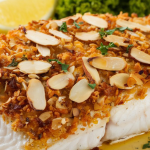
Almondine Fish Recipe
- Total Time: 35 minutes
Description
Want to make a restaurant-quality fish dish at home? This classic almondine fish recipe brings together delicate fish flavors with a crispy almond coating. You’ll create an elegant meal that’s surprisingly easy to prepare.
Description of the recipe
The baked almondine fish showcases a golden-brown crust made with panko breadcrumbs and sliced almonds that went together with one another with fresh parsley and zesty lemon. A mayonnaise coating will give a moist texture to the fish while baking and results in flaky, tender filets.
Ingredients
- 6 cod filets (6 ounces each)
- ¾ cup panko breadcrumbs
- ⅓ cup sliced almonds
- 3 tablespoons salted butter, melted
- 2 tablespoons chopped parsley
- ⅓ cup all-purpose flour
- ½ cup mayonnaise
- 1 lemon
- Kosher salt and black pepper to taste
Instructions
- Preheat your oven to 375°F (190°C).
- Mix panko breadcrumbs and almonds in a small bowl. Add melted butter and toss until combined. Add parsley, ½ teaspoon salt, and ¼ teaspoon pepper.
- Season flour with a pinch of salt and pepper in a shallow dish.
- Coat both sides of fish filets in the seasoned flour and shake off excess.
- Apply a generous tablespoon of mayonnaise over each fish piece.
- Add the crumb mixture on top and press lightly to stick.
- Bake until the crumbs turn golden and the fish flakes easily, about 16-18 minutes.
- Squeeze fresh lemon juice before serving.
Notes
- The mayonnaise plays a significant role to keep the fish moist and helps the crumb coating stick.
- Add ¼ cup grated Parmesan cheese to the crumb mixture to enhance flavor.
- Watch your cooking time – the fish should be just cooked through and flaky.
- Prep Time: 15 minutes
- Cook Time: 20 minutes
- Category: Seafood
- Method: Baking
The Art of Making Perfect Almond Crust
The magic of almondine fish preparation lies in creating the perfect almond crust. A delicate balance between texture and technique will turn simple ingredients into a golden, crispy coating.
Your almond selection makes a big difference. You can choose between finely ground almonds or crushed sliced almonds. Ground almonds give you a uniform crust, and sliced almonds add extra texture with visual appeal. A combination of both works great – use ground almonds as your base with some crushed sliced almonds to get that perfect crunch.
A proper coating technique will give you that restaurant-worthy crust. Pat your fish completely dry since moisture ruins crispiness. Dijon mustard adds flavor and works as the perfect adhesive for your almond mixture. The crust needs gentle but firm pressure to stick well to the fish.
The perfect golden-brown finish depends on proper temperature control. Set your oven to 400°F and you’ll hit the sweet spot that browns your crust beautifully while keeping the fish moist and tender. A hot oven will give you that coveted crunch without overcooking your fish.
Here are your golden rules to get the perfect almondine crust:
- Always use a three-bowl system: flour, egg wash, and almond mixture
- Keep one hand dry and one wet during the coating process
- Press the almond mixture firmly but gently onto the fish
- Ensure your oven is fully preheated before baking
- Use a light spray of oil on top for extra browning
The crust develops in stages. You’ll see it turn light golden around 4-5 minutes, then develop into that beautiful deep golden-brown color. Your patience will pay off – don’t flip the fish too early and let that perfect crust develop.
Professional chefs use a simple trick to prevent sogginess. Place your baking sheet in the oven during preheating. This creates an immediate sear at the time the fish hits the pan, which results in that perfectly crispy exterior that makes almondine fish so special.
The perfect crust should be golden brown and crispy outside while protecting the delicate fish inside. Each bite will give you a satisfying crunch followed by tender, flaky fish beneath.
Read also: The Art of Salt Baked Fish
Common Mistakes to Avoid When Making Fish Almondine
Let’s head over to the most common pitfalls that might catch you off guard at the time you prepare almondine fish. Understanding these challenges will give you the tools to create this classic dish perfectly every time.
Here are the significant mistakes to avoid:
- Starting with Low-Quality Fish: Your almondine dish’s quality depends on your fish. Fresh fish should have clear eyes and shiny skin. Flash-frozen fish often proves fresher than what sits on ice at the counter.
- Skipping the Drying Step: This game-changing step deserves your attention. Your fish needs thorough patting with paper towels before resting uncovered in the fridge for 30 minutes. This step prevents mushy texture and creates the perfect sear.
- Poor Timing with Seasoning: A pro tip that works wonders – season one side when the fish reaches 80% doneness, then season the other side after cooking. This technique prevents moisture loss while developing proper flavor.
- Cold Pan Syndrome: The pan should preheat over medium-high heat for 3-5 minutes before cooking. You’ll know it’s ready when the oil starts shimmering. This approach will give a beautiful golden crust without sticking.
- Constant Fidgeting: Your fish needs its space! The urge to check and flip constantly must be resisted. Let it cook undisturbed for 3-4 minutes until it releases naturally from the pan. Think of this as your moment of culinary zen!
The 10-minute rule makes timing simple: measure your fish’s thickest part and cook for 10 minutes per inch of thickness. The fish should reach an internal temperature of 145°F and appear opaque throughout.
Bonus Tip: Thick cuts benefit from 15-25 minutes at room temperature before cooking. This approach ensures even cooking and prevents an overcooked exterior with an undercooked center.
Note that becoming skilled at preparing almondine fish requires finesse and attention to detail. Each preparation builds your confidence, developing your instinct for perfect timing and temperature control.
You may like: Crispy Baked Battered Fish Recipe
Health Benefits of Almondine Fish
A plate of almondine fish delivers an impressive array of health benefits. This isn’t just about a delicious dinner – your body gets a powerhouse of essential nutrients with every bite.
High-quality protein from fish makes it an excellent choice to maintain muscle health and overall wellness. The sort of thing I love about fish is that it’s packed with omega-3 fatty acids, remarkable nutrients that support both your heart and brain health. Your body can’t produce these essential fatty acids on its own, so getting them through delicious dishes like almondine fish is a vital part of your diet.
Your plate of fish almondine provides these vital nutrients:
- Rich sources of vitamins D and B2 (riboflavin)
- Essential minerals including calcium and phosphorus
- Important trace elements like iron, zinc, and magnesium
- Heart-healthy omega-3 fatty acids
- High-quality protein with all essential amino acids
The American Heart Association recommends eating fish twice weekly as part of a healthy diet. This isn’t just about guidelines – it’s about giving your body what it needs to thrive. Preparing fish almondine in the oven instead of deep-frying preserves these valuable nutrients and keeps the dish light and healthy.
Here’s something fascinating – your fish almondine dish’s omega-3s can help lower blood pressure, reduce inflammation, and decrease the risk of irregular heartbeats. These benefits become more pronounced with fatty fish in your almondine preparation, though lean white fish offers substantial nutritional advantages too.
Baked almondine fish tastes great and protects your heart health. People who eat it regularly have a lower risk of heart disease, especially sudden cardiac events. The combination of fish and almonds creates a meal that boosts both brain function and heart health.
The way you prepare fish makes a big difference in maximizing these health benefits. Baking your almondine fish instead of deep-frying preserves more nutrients while keeping the dish heart-healthy. This method lets you enjoy fish’s natural benefits plus the nutritional bonus from heart-healthy almonds.
References:
– National Library of Medicine
– UT Health
Nutritional Information
Knowing what’s in your almondine fish helps you make smart choices about portions and meal plans. Let’s explore the nutritional breakdown of this tasty dish.
Your baked almondine fish serving delivers 246-516 calories, based on portion size and how you prepare it. Here’s what a typical serving contains:
| Nutrient | Amount | % Daily Value |
|---|---|---|
| Protein | 20-32g | 40-64% |
| Total Fat | 15-33g | 23-51% |
| Carbohydrates | 8-21g | 3-7% |
| Dietary Fiber | 1-4g | 4-16% |
| Cholesterol | 58-289mg | 19-96% |
| Sodium | 318-529mg | 13-22% |
This dish packs these essential nutrients:
- High-quality protein that maintains muscles
- Almonds and fish provide heart-healthy fats
- Rich mineral content with potassium (674mg per serving)
- Vital nutrients like Vitamin A (650 IU) and Vitamin C (5mg)
- Bone-strengthening Calcium (131mg) and Iron (2.1mg)
A standard portion of baked almondine fish fits perfectly into a balanced diet if you’re tracking calories. The protein content stands out remarkably, giving you up to 90% of your daily requirements in one serving. The moderate carbs (8-21g per serving) make this dish suitable for different diet plans.
Healthy sources like almonds and fish provide most of the fat content in this dish. The total fat might look high (15-33g), but these fats boost your heart and brain health. The dish keeps saturated fat relatively low at 4-7g per serving.
The sodium level stays moderate at 318-529mg per serving, which leaves room in your daily sodium budget for other foods. Cholesterol varies from 58-289mg per serving, depending on your choice of fish and cooking method.
Pro Tip: You can cut calories by using less butter in your almond crust or choosing a lighter fish. This brings down the calorie count while keeping that amazing flavor intact.
Serving Suggestions and Side Dishes
The perfect side dishes can revolutionize your almondine fish into a complete meal. Selecting accompaniments that complement rather than overpower the delicate fish flavors makes all the difference.
Crisp vegetable sides work great as a starting point. A simple sautéed garlic green beans dish pairs exceptionally well and offers a satisfying crunch that complements the fish’s nutty almond crust. Pro tip: Keep the seasoning minimal to let both dishes shine.
Your almondine fish pairs beautifully with several excellent starchy sides:
- Wild rice salad with pecans and dried fruits
- Lemon zucchini tian for a French touch
- Buttered egg noodles for comfort
- Garlic mashed potatoes
- Classic rice pilaf with herbs
Grilled or roasted vegetables bring vibrant colors and nutrition to your plate. Grilled asparagus with garlic butter or cheesy skewered vegetables create an appealing presentation. The smoky char creates a delightful contrast to your tender fish.
A Brussels sprouts slaw delivers an authentic French dining experience. This modern twist on traditional coleslaw adds sophistication to your meal. The honey-cider dressing creates perfect harmony with the buttery fish flavors.
Fresh salads are a great way to get wonderful texture. A wild rice salad brings nutty flavors that echo the almonds in your fish coating. Light dressing helps maintain the salad’s crispness.
A crusty French baguette serves dual purposes with your fish almondine. It soaks up the delicious sauce and adds authentic flair to your meal. The bread tastes best slightly warmed just before serving.
The “rule of three” creates a restaurant-style presentation: almondine fish as the star, vibrant vegetables for color, and a starchy side for substance. This combination delivers visual appeal and balanced flavors.
Mushroom pepper fry adds an unexpected yet delightful twist. The earthy mushrooms and gentle heat from the pepper create interesting contrasts with the delicate fish.
Read also: Baked Fish with Parmesan Cheese
Storage and Reheating Tips
Your almondine fish can taste just as delicious when reheated as it did during your first meal. Let me show you the quickest way to store and reheat it while keeping its amazing flavors intact.
Proper Storage Guidelines
The right storage method will keep your almondine fish fresh in the refrigerator for 3-4 days. Always use an airtight container to protect your fish from absorbing other flavors and prevent that unwanted “fridgy” taste. Cool your fish completely before storing it, but don’t leave it out longer than two hours.
The freezer works great for longer storage. Your fish almondine stays good up to 3 months when wrapped properly. Here are the core storage tips:
- Place parchment paper at the bottom of your container to prevent sticking
- Remove as much air as possible before sealing
- Label with the date and contents
- Store at 0°F (-18°C) or below
Reheating Methods
You have several options to reheat your leftover almondine fish:
| Method | Temperature | Time | Notes |
|---|---|---|---|
| Oven | 275°F | 15-20 min | Best for maintaining crust texture |
| Stovetop | Low heat | 5-10 min | Good for retaining moisture |
| Microwave | 50% power | 30-sec intervals | Quick but may affect texture |
Tips for Best Results
Your fish almondine needs moisture while keeping that delicious almond crust intact. Always cover your fish during reheating to keep it from drying out. A loose foil tent works great for oven reheating – it protects the fish and lets steam escape.
Avoid high temperatures during reheating. Your fish can become tough and dry quickly. A damp paper towel over your fish works well for microwave reheating – check it frequently between short intervals. A non-stick pan with a lid gives the best results on the stovetop, helping retain moisture while re-crisping the crust.
Frozen almondine fish needs time to thaw properly. Move it to your refrigerator the night before you plan to eat it. A full 24 hours ensures proper thawing. The fish should never thaw at room temperature – this can lead to bacterial growth and safety issues.
Variations of Classic Almondine Fish
The classic French almondine fish preparation stands the test of time, yet chefs of all types have created exciting new versions worth trying. These variations stay true to the original’s essence while bringing fresh flavors and presentations to the table.
Regional Interpretations The French classic has taken different forms in cuisines of all types. New Orleans chefs make a spicier version with local red snapper. Mediterranean cooks add fresh herbs and citrus to their preparations. These regional takes showcase local flavors while keeping the dish’s elegant simplicity.
| Region | Signature Touch | Featured Fish |
|---|---|---|
| French Classic | Brown butter sauce | Sole/Trout |
| New Orleans | Cajun seasoning | Red Snapper |
| Mediterranean | Herb-infused | Sea Bass |
| Pacific Northwest | Steelhead trout | Rainbow Trout |
Modern Interpretations Here are some contemporary takes on the classic sauce you can try:
- Lemon Marmellata – An Italian-inspired citrus twist
- Almond cream enhancement – Adds richness and depth
- Brown butter with sage – A aromatic variation
- White wine reduction – A lighter alternative
You can adapt the cooking method to match your priorities. Traditional recipes call for pan-searing, but other techniques work well too. Many home cooks get great results with a quick broil finish that creates a golden crust and keeps the fish moist.
Getting Creative with Your Fish Selection Cod makes an excellent alternative to traditional sole or trout. Its thick, flaky texture works perfectly with the almond crust while keeping that delicate flavor. Salmon offers a bolder option – its rich taste pairs beautifully with the nutty almond coating.
Small changes to the sauce can create entirely new taste experiences while keeping the dish’s elegant character. A touch of fresh tarragon adds herbal notes, while capers bring a briny kick to the dish.
Green Bean Connection The almondine preparation has become so popular that people now use it with vegetables too. The same brown butter and almond combination works great in classic green beans almondine, showing this method’s versatility.
The key elements should always stay consistent: almonds’ nutty crunch, a butter-based sauce, and proper cooking temperature. These basics ensure your dish keeps its sophisticated appeal, whether you stick to tradition or try something new.
Read also: Baked Black Cod Fis Recipe
Conclusion
Becoming skilled at almondine fish preparation unlocks countless ways to create elegant, restaurant-quality meals at home. This classic French method turns simple fish filets into sophisticated dishes with a perfect blend of crispy almond coating, delicate fish, and rich butter sauce. The recipe’s success relies on fresh fish selection, proper equipment, and the right techniques.
This versatile dish deserves a spot in your cooking arsenal. Traditional preparations and modern variations both deliver outstanding flavor and impressive nutritional benefits. Note that patience and precision make the biggest difference – you must properly dry the fish and achieve that perfect golden-brown crust. Your journey should begin with easier fish varieties like flounder or sole, and your confidence will grow enough to try other types.





